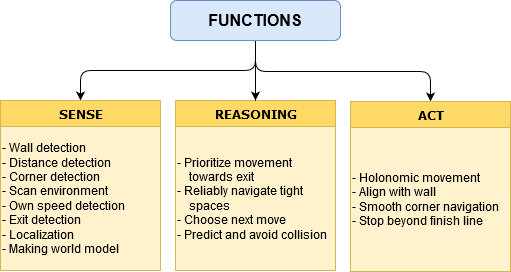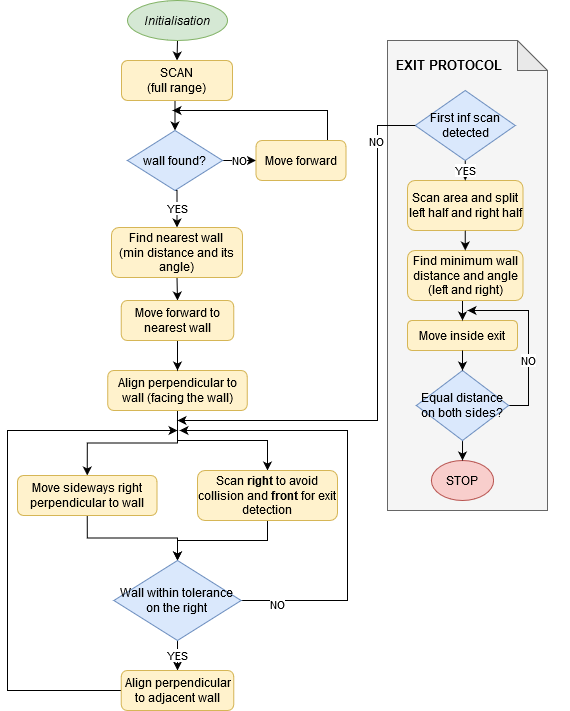Mobile Robot Control 2020 Group 7: Difference between revisions
| Line 30: | Line 30: | ||
==Specifications == | ==Specifications == | ||
The information about what the system can do are written down in the specification tree, which can be found infigure 4.1. | The information about what the system can do are written down in the specification tree, which can be found infigure 4.1. | ||
== Design == | == Design == | ||
Revision as of 16:49, 15 May 2020
Group Members
| Name | Student Number | |
|---|---|---|
| 1 | Mick Decates | 0957870 |
| 2 | Steven Eisinger | 1449273 |
| 3 | Gerben Erens | 0997906 |
| 4 | Roohi Jain | 1475061 |
| 5 | Mengqi Wang | 1449435 |
| 6 | Goos Wetzer | 0902160 |
Requirements
The requirements for the challenge are shown in figure 1.1. The primary requirement is safety that we need to fulfill by avoiding collision. All other requirements shall be treated equally.
Functions
Once the robot is deployed in the room, it should sense around the room and try to find the exit corridor. If it cannot find the corridor, it should move around the room in an attempt to find it. Once the corridor is found it should position itself in front of the corridor and proceed through it until crossing the finish line.The functions that the robot needs to perform these tasks are described in Figure 2.1. These functions are divided into three main components: Sense, which allows the robot to perceive and quantify its world; Reasoning, where the robot makes a decision based on its perception; and Act, which determines what action the robot performs based on its reasoning information.

Specifications
The information about what the system can do are written down in the specification tree, which can be found infigure 4.1.
